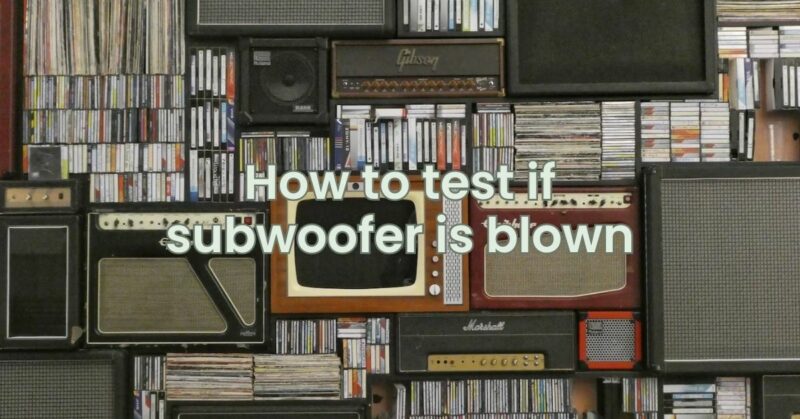A subwoofer plays a crucial role in delivering deep and powerful bass in audio systems. However, subwoofers can sometimes experience issues, including being blown or damaged. It’s important to determine if a subwoofer is blown to ensure optimal audio performance and prevent further damage. In this article, we will provide a step-by-step guide on how to test if a subwoofer is blown, helping you diagnose the issue and take appropriate measures to resolve it.
- Visual Inspection:
- Begin by visually inspecting the subwoofer for any noticeable physical damage.
- Look for tears or holes in the cone, surround, or other components.
- Examine the speaker’s connections, ensuring they are securely fastened.
- Listening Test:
- Play audio through the subwoofer at a moderate volume.
- Listen for any distortion, crackling, or buzzing sounds.
- Pay attention to any significant changes in sound quality compared to previous performance.
- Bass Response Evaluation:
- Play bass-heavy audio tracks that you are familiar with.
- Listen for any loss of low-frequency response or lack of impact.
- Note if the subwoofer fails to produce deep, rumbling bass as it should.
- Subwoofer Cone Movement:
- Visually observe the movement of the subwoofer cone during audio playback.
- Ensure the cone moves freely and in sync with the audio signals.
- Look for any irregular or restricted movement, indicating a potential issue.
- Connectivity Check:
- Inspect the subwoofer’s connections and cables for any loose or damaged connections.
- Ensure that the subwoofer is properly connected to the amplifier or receiver.
- Verify that the settings on the audio source and amplifier are correctly configured for the subwoofer.
- Subwoofer Testing with a Multimeter:
- Disconnect the subwoofer from the amplifier or receiver.
- Set a multimeter to measure impedance (ohms).
- Connect the multimeter’s probes to the subwoofer’s positive and negative terminals.
- Check the impedance reading, which should match the subwoofer’s specified impedance rating.
- Professional Assessment:
- If you have performed the above tests and suspect the subwoofer is blown, consider seeking professional assistance.
- Contact an audio technician or a service center specialized in speaker repairs.
- They can conduct more advanced tests and provide expert guidance on repair or replacement options.
Conclusion: Testing a subwoofer for potential damage is crucial for maintaining optimal audio performance. By following the steps outlined in this guide, you can determine if your subwoofer is blown or experiencing issues. Visual inspection, listening tests, evaluating bass response, and checking connectivity are essential steps. Additionally, using a multimeter to measure impedance can provide further insights. If you suspect a blown subwoofer, it’s advisable to consult a professional for a detailed assessment and recommendations for repair or replacement.


